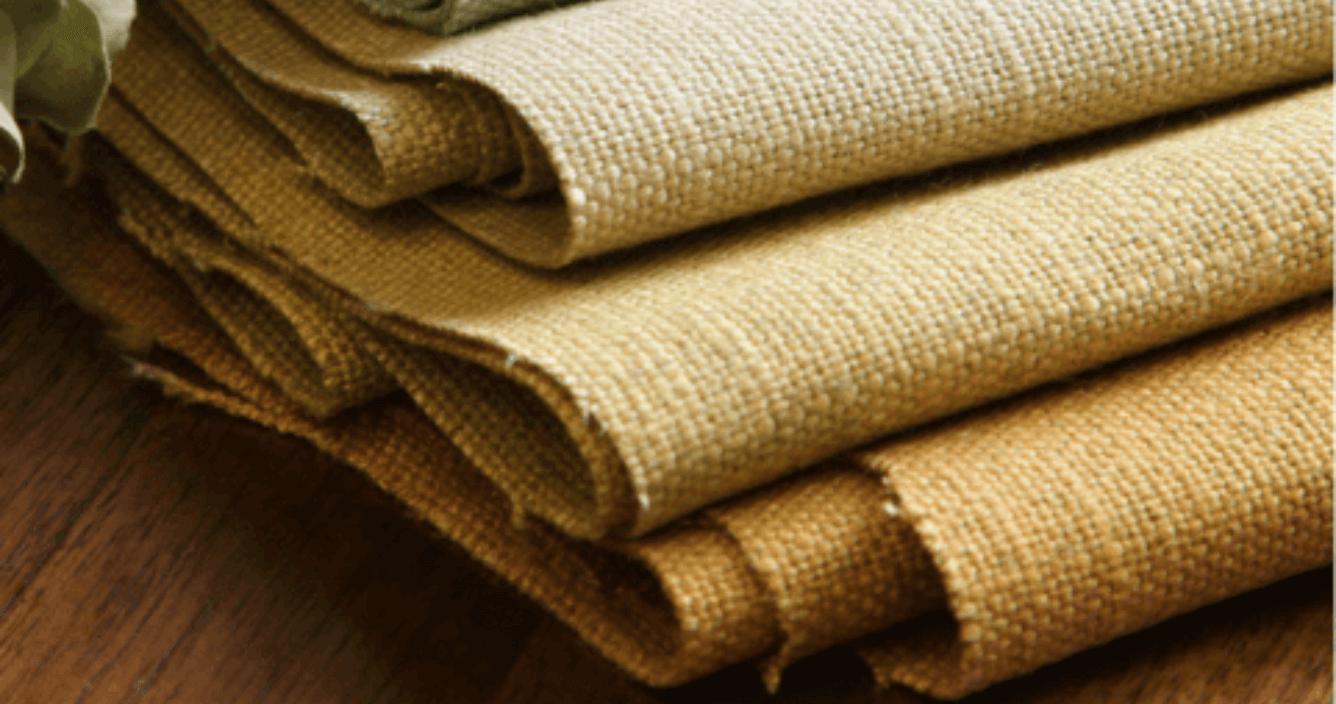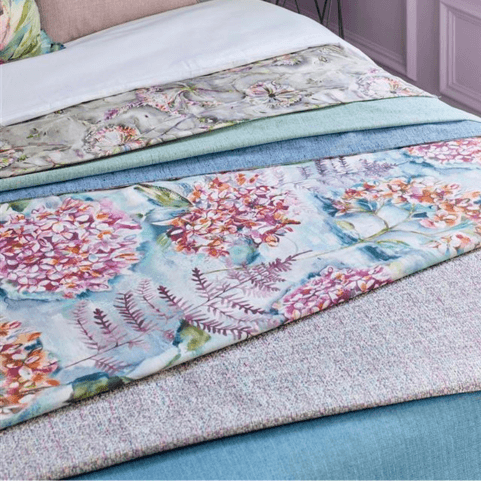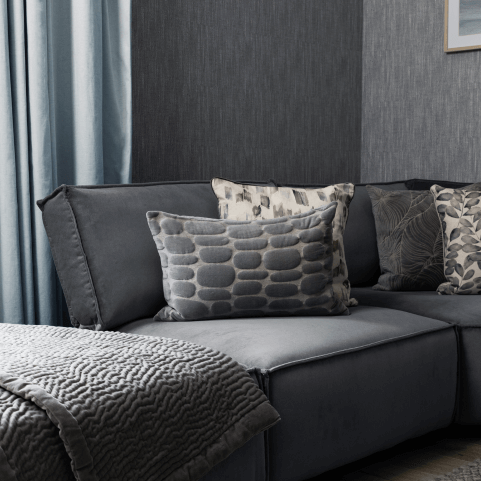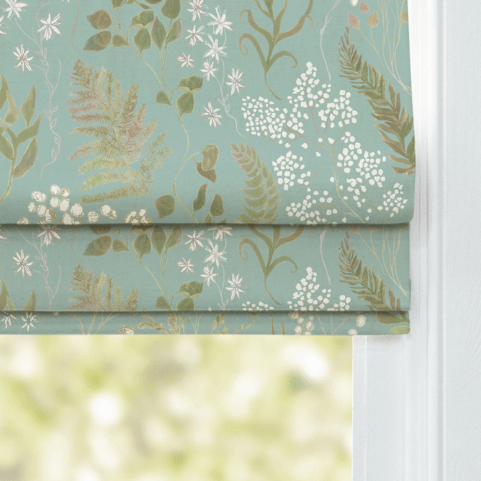Discovering mould on your cherished fabric items, be it sofas or blinds, can be disheartening. In this guide, we discuss how to remove mould from fabric and prevent any future mishaps, ensuring your luxury interiors stay pristine. We'll explore not only the aesthetic benefits to removing mould but also the health considerations that make this task imperative.
Mould is a type of fungus that thrives in damp and humid environments. It reproduces through spores, which are tiny particles that can be carried through the air or by attaching themselves to surfaces. Mould growth occurs when spores land on a suitable surface in a moist environment and find organic materials to feed on.
In the context of fabric items like blinds, curtains, or upholstered furniture, mould can develop when these surfaces provide a conducive environment for its growth. The key factors that contribute to mould growth on fabric include…
Moisture: Excess moisture is a primary catalyst for mould growth. Fabrics that remain damp for extended periods, either due to high humidity or direct exposure to water, create an ideal habitat for mould.
Poor Ventilation: Inadequate air circulation and ventilation can contribute to moisture buildup. Areas with limited airflow, such as behind curtains and blinds or in corners where air doesn't circulate well, are susceptible to mould growth.
Organic Matter: Mould requires organic materials to thrive. Fabrics, specifically organic ones, provide a food source for mould spores to spread and grow.
Darkness: Mould tends to flourish in dark environments. Areas with reduced light, like the backs of curtains or the shaded side of upholstered furniture, create favourable conditions for mould development.
If you find your space often suffers from excess moisture, poor ventilation, and any of these other key factors, then it’s important that you take steps to avoid mould growth.
To prevent mould on fabric items, it's essential to address any issues with moisture, darkness, and ventilation. This may involve using dehumidifiers in areas prone to high humidity or making use of fans and windows to improve airflow. See our tips below for ways to prevent mould on fabrics.
Control Humidity: Use dehumidifiers in areas prone to high humidity, especially during humid seasons and ensure proper ventilation in bathrooms, kitchens, and other moisture-prone areas.
Promote Air Circulation: Open windows and doors regularly to allow fresh air to circulate throughout the home and use fans to improve air flow, particularly in rooms with limited ventilation. If your space has upholstered furniture, avoid placing it directly against walls to allow air to flow freely.
Regular Cleaning: Regularly cleaning your curtains, blinds, and upholstery will help to remove dust and prevent the accumulation of organic matter that mould feeds on. This can be done as part of your regular cleaning routine, using a vacuum with a brush attachment to eliminate dust and debris. Always follow care instructions for cleaning and maintenance provided by the fabric manufacturer.
Quickly Address Leaks or Spills: Promptly repair any water leaks or plumbing issues to prevent moisture build-up. It’s important to dry any wet or damp fabrics as soon as possible, either by using fans or air-drying in a well-ventilated area.
Sunlight Exposure: Allowing natural sunlight into your home can help to prevent mould build-up as ultraviolet light can naturally kill spores and dry out any damp areas on the fabric. Consider opening curtains and blinds during the day to let sunlight reach your fabric surfaces.
If you find that furnishings or textiles in your space are already suffering from mould growth, then it’s important that you take care in removing this. Follow the steps below on how to remove mould from fabric before you take any other preventative measures.
It’s incredibly important to know how to remove mould from fabric because if left unchecked, it can cause serious damage to your window dressings and home furnishings and even affect your health. The harmful spores are released into the air posing a significant risk to respiratory health, while also creating unpleasant odours and staining your fabrics.
Check the Label: Before starting, check the fabric's label for washing instructions. Look for recommended washing temperature, technique, and drying instructions.
Safety First: When dealing with mould, it’s important to protect yourself from exposure. Wear gloves, a mask, and eye protection to avoid both airborne and direct exposure to the spores.
Gently Brush & Vacuum: Select a mould remover that is suitable for your fabric, like white vinegar. Apply it to the fabric according to the manufacturer’s instructions and then gently brush off any surface mould with a toothbrush. You can then use a vacuum with a HEPA filter to remove any remaining particles.
Stain Removal: If your mould infestation is minor, you can simply use a stain-removing wipe. Simply wipe from the outside in with gentle strokes to prevent any spreading of the mould particles. It’s important not to rub the fabric as this can push the spores deeper into the fabric. We always recommend gently dabbing the fabric to remove any stains.
Pre-Soak: For more stubborn stains, pre-soak the fabric. You can find many pre-soak products on the market or make your own by mixing equal parts white vinegar and water. Leave your fabric in your solution to soak for at least an hour.
Hot Water Wash: If your fabric can withstand it, hot water can help to remove bacteria and kill off the remaining mould spores. Make sure to check your label again to ensure you don’t damage the fabric and exceed maximum washing temperatures.
Mould-Killing Solution: If you are able to machine wash your fabric, you can use a mould-killing solution in the wash. Add 200-400ml white vinegar to your wash cycle to kill the mould or use 200-300g baking soda to remove any damp or musty smells.
Sun-Dry: After washing, hang the fabric in the sun to air dry. Sunlight helps bleach and kill remaining mould spores. We recommend you avoid using a dryer as excessive heat may damage your fabric.
Prevent Regrowth: Identify and fix the source of moisture causing mould growth, like poor ventilation or dampness. Use our tips above on how to prevent mould on fabric.
Knowing how to clean a fabric sofa is essential to keeping your space fresh and ensuring the longevity of your furnishings. As always, you should start by checking the manufacturer's cleaning instructions on the sofa's label. This is important as you don’t want to use products that aren’t suitable for the upholstery. Once you’ve checked the label, you can follow the steps below to get your sofa back to its best!
Vacuum: Remove loose debris by vacuuming with an upholstery brush attachment, reaching into crevices and seams to get all surface dust and dirt off.
Spot Clean Stains: For stains, identify the fabric type and use a suitable cleaning solution, such as a mix of mild detergent and water. Using a clean microfibre cloth, gently blot any stains with your cleaning solution, avoiding rubbing to prevent further damage. If you’re unsure how to clean mould off a fabric sofa, you can refer to the steps above on how to remove mould from fabric.
Deep Clean: If you find the stains on your sofa are a little more stubborn, consider professional cleaning for a thorough refresh, especially if the sofa has intricate details or delicate fabrics. Professional cleaners can help with stain removal as well as mould removal.
Odours: If you struggle with unpleasant odours, sprinkle some baking soda on the fabric and let it sit before vacuuming. Baking soda has absorbent properties, meaning it can capture and neutralise odorous molecules.
Be Gentle: We must stress that some upholstery fabrics are more fragile than others, which is why you should always check the manufacturer’s instructions when it comes to cleaning your sofa. It’s also important to always test any cleaning solutions or products in an inconspicuous area first as they may contain chemicals such as bleach which can lighten the fabric.
With proper care, your fabric sofa can continue to exude comfort and elegance in your home for years to come.
Understanding how to clean your fabric blinds or curtains is important to ensure they maintain their elegance. Depending on the level of cleaning required, you can regularly dust, spot clean, or have them dry cleaned. For a comprehensive guide on cleaning fabric blinds and curtains, including detailed steps on how to remove mould and tips for a pristine finish, refer to our Cleaning Guide.
Mould can be stubborn, and it’s often disheartening when it finds its way into the home, but you don’t have to let it ruin your interior or your health. With this in-depth guide and our expert insights, you now know how to remove mould from fabric and keep your curtains, blinds, and upholstery in perfect condition. By addressing key factors such as moisture and poor ventilation, you can prevent mould and keep your home in tip-top shape. Our tips on cleaning fabric blinds, removing mould from fabrics, and maintaining a clean sofa ensure your spaces remain clean and stylish.



















